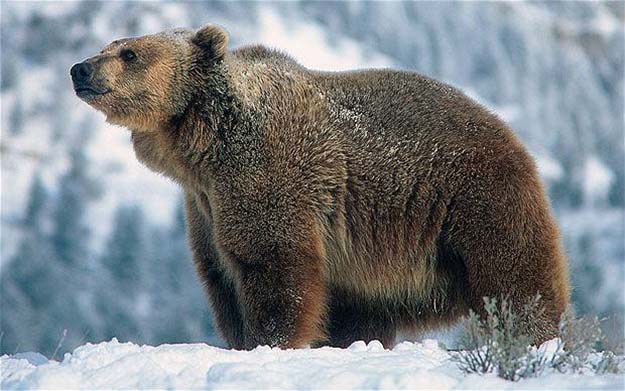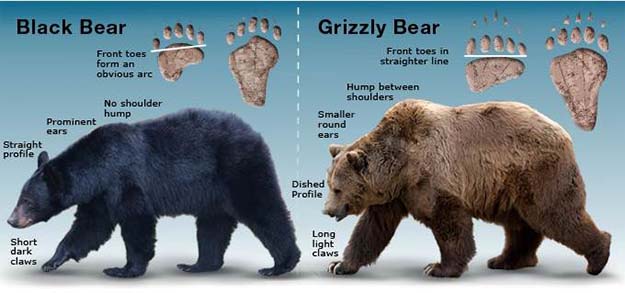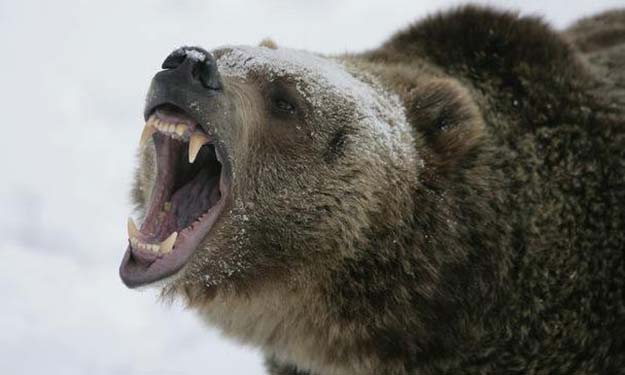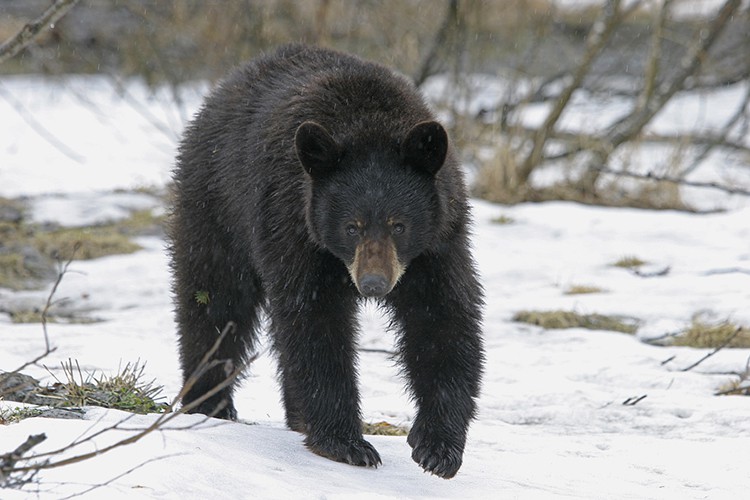Bear Encounters
What to Do When You Encounter a Bear in the Wild
You’re on a winter hike or camping trip with friends and family and to your surprise you see a bear, and it has spotted you. The first thought that crosses most people’s minds in this very moment is, “I thought bears hibernated during the winter?!” Your next thought, perhaps…“What do I do now?!”
The Misconception of Bear Hibernation: The Difference Between Hibernation and Torpor
It is a common misconception that bears hibernate during the winter. While bears tend to slow down during the winter months, they are not true hibernators. Black and brown bears do go into a deep sleep during the winter months, known as torpor.
True hibernation is when animals “sleep” through the winter. During this sleep, the animals will not wake up when they hear a loud noise or even if they are moved or touched. Animals hibernate as a way to adapt to their surroundings. They have to be able to survive the cold weather. They hibernate to escape the cold and because food is scarce.
During a bear’s dormant state, or torpor, their heart rate is extremely low but their body temperature is relatively high, and they won’t eat or release bodily waste. While in torpor, the animal can wake up quickly and easily.
To get ready for torpor, black and brown bears will eat more than usual during the fall to store up body fat. During torpor, bears will use up this extra body fat to live off of while not losing any muscle. This allows the bear to come out of torpor thinner and still as strong as it was before winter. Bears will get their dens ready for torpor during the late fall. The bears get ready usually late November depending on when the cold weather hits.
For brown bears, once it really cools down (usually late November to mid December depending on the location), they will den up only to come out during the warmer days. When they do come out, it’s only for a short bit, and they are not very active during that time. They are quick to retreat back to their cave.
Black bears slow down and spend most of the time in their dens or caves; however, they still snack a little throughout the winter.
Bear Encounters

Bears are more active during the spring, summer, and fall months, but on the warmer days in the winter months when they leave their dens is when a possible encounter can occur.The temperament of a bear can vary (for a variety of reasons) with each season but, the safety measures or actions you take should always be the same whenever you encounter a bear.
What to Do During a Bear Encounter: Know What You Are Dealing With
Remain calm and ready your bear spray (or other deterrent). Stay together if you are in a group; you will appear larger and more intimidating if you stick together.
Here’s an example of bear spray that can purchased on Amazon.
Try to figure out whether the bear is a grizzly (brown bear) or a black bear. Grizzly bears and black bears tend to behave differently in a given situation, so it helps to know which species you’re dealing with. The following infographic demonstrates the differences between grizzly and black bears.

If possible, try to determine whether there are cubs present or whether the bear is defending an animal carcass or other food source. Females with cubs or bears defending food sources may appear to act aggressively as they defend their cubs and/or food.
If you see a bear in the distance, respect its need for personal space. Do not approach it, even to get a photo, and give it as much room as possible. Consider turning around and leaving the way you came. If you must continue, take a detour and give the bear a wide berth. Bears can cover large distances in a relatively short period of time, so if you are camping, be sure to store your food well out of reach of any bears in the area.
What to Do in a “Defensive” Encounter Situation

Sometimes a bear that feels threatened will “act” aggressively to defend against a perceived threat. This is often the case with a mother bear with cubs, a bear defending a food source, or a surprise encounter. The closer you are to the bear when it becomes aware of you, the more likely it is to react defensively. The bear may pop its jaws or swat the ground with its front paw while blowing and snorting, and/or it may lunge or “bluff charge” toward you in an attempt to get you to leave.
In this situation, the bear doesn’t want to fight any more than you do. It is simply trying to communicate that you are too close. Try to appear non-threatening by remaining still and calm.
Ready your bear spray by removing the safety lock. Speak in an appeasing voice and back away, increasing your distance from the bear. Leave the area immediately.
Defensive responses that result in physical contact almost always involve grizzly bears surprised at close range, on a carcass or protecting young. The very few defensive attacks by black bears have been females protecting cubs (but these are very rare).
If you encounter a bear on a carcass, get as far away from the bear’s cache as possible; leaving the area quickly and quietly preferably in the same direction you came in. If the bear is about to make contact, use your bear spray. Do not play dead and do not act aggressively. Get as far away from the food cache as possible.
If a bear that is behaving defensively is intent on making contact, your first line of defence is always your bear spray. Point the nozzle just above the bear’s head so that the spray falls into the bear’s eyes, nose and throat. When it is 20 to 30 feet away, give it a long blast. That should be enough to discourage it and send it in the other direction.
If the encounter was a surprise or it involves a mother grizzly bear with cubs, and the bear makes physical contact, fall to the ground and “play dead.” Roll over onto your stomach and cover your neck and the back of your head with your hands. Keep your legs and elbows wide so the bear can’t flip you over. When the attack stops, remain still and wait for the bear to leave. Do NOT get up until you are absolutely certain the bear is no longer in the area – even if you have to wait 30 minutes or longer.
Repelling a Non-Defensive Bear
Occasionally, a bear will approach you in a non-defensive manner. It may just be curious. Perhaps it’s a young adult bear that is simply testing its dominance. Very rarely, it may see you as potential prey.
In any event, talk to the bear in a firm voice. Get out of its way if you can, which may be all it wants. If the bear follows you and it’s attention is clearly directed at you, then stand your ground and prepare to use your deterrent. A bear that is initially curious or testing you may become predatory if you do not stand up to it.
Act aggressively. Look it straight in the eyes and let it know you will fight if attacked. Shout! Make yourself look as big as possible. Stamp your feet and take a step or two toward the bear. Threaten the bear with whatever is handy (stick, pole, bear spray). The more the bear persists, the more aggressive your response should be.
If the bear attacks, use your deterrent and fight for your life. Kick, punch or hit the bear with whatever weapon is available. Concentrate your attack on the face, eyes and nose. Fight any bear that attacks you in your building or tent.
No matter the season, bear encounters should always be acted upon with caution. Bears are magnificent animals and like all animals, they should be treated with respect, but knowing what to do in a potentially life threatening situation with a bear is important.

